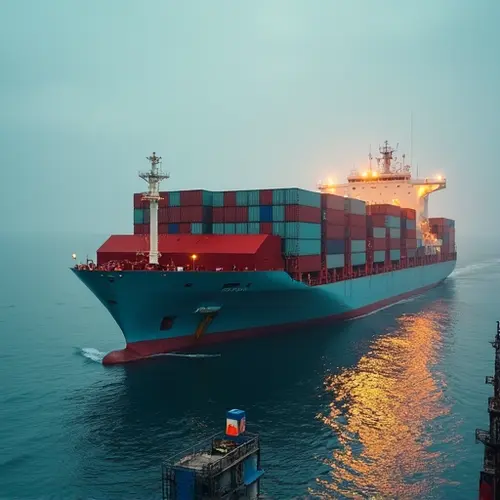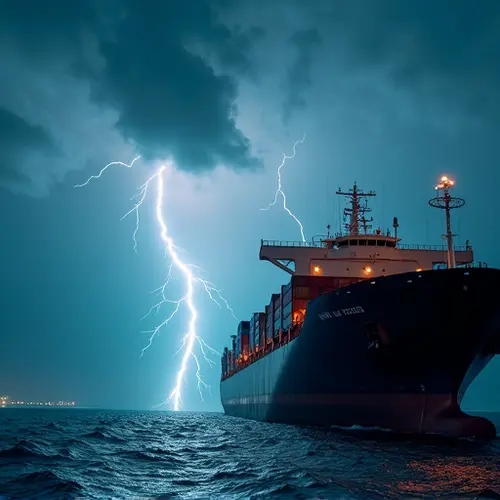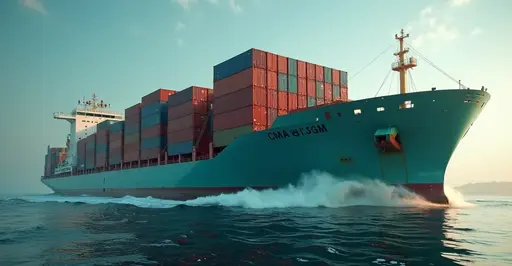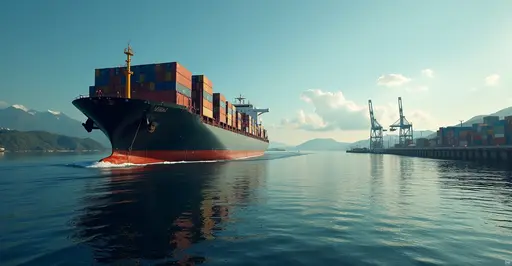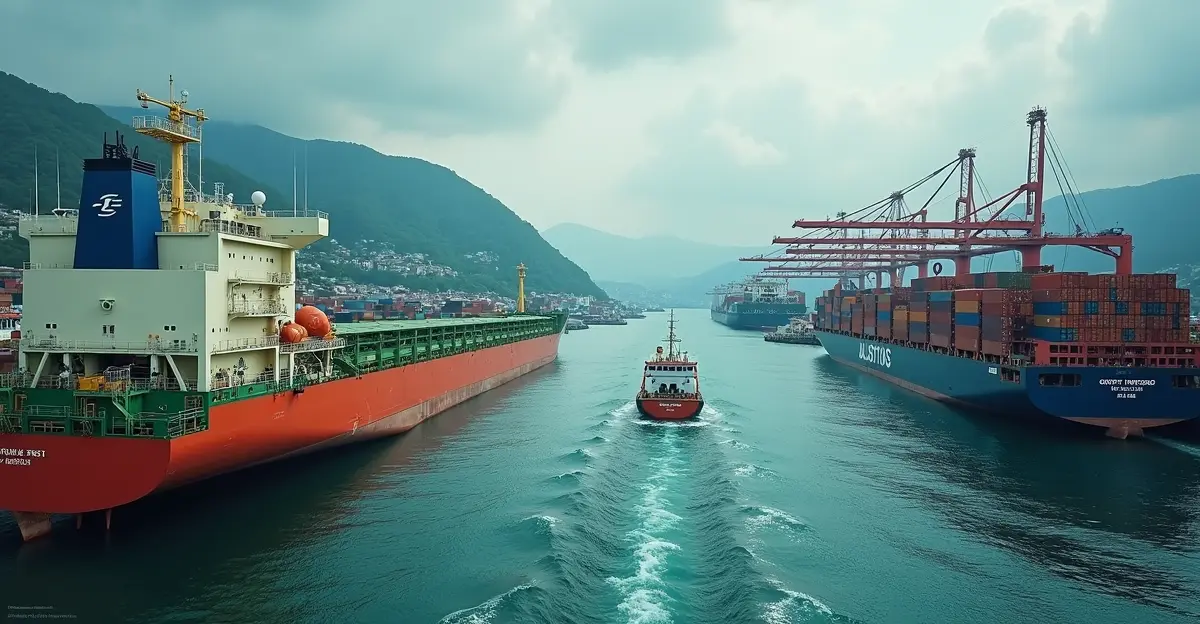The International Maritime Organization approved a historic Net-Zero Framework in April 2025, committing global shipping to net-zero emissions by 2050. The binding regulations include fuel standards and GHG pricing, with major carriers embracing alternative fuels.
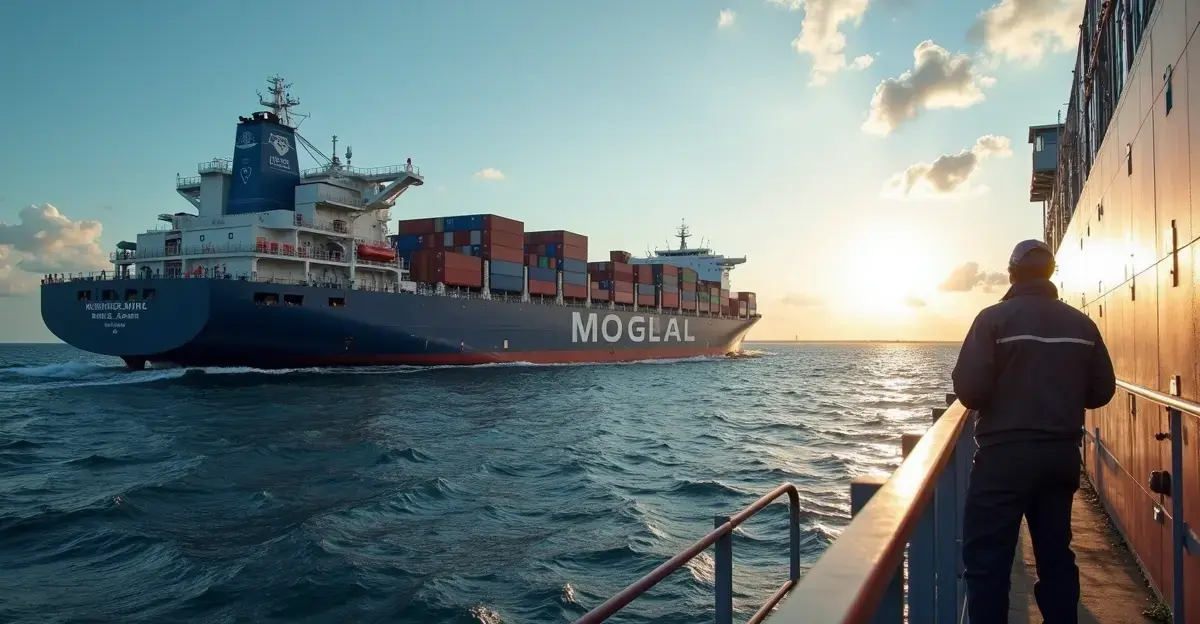
Historic IMO Agreement Sets Shipping on Net-Zero Course
The global shipping industry has reached a historic turning point with the International Maritime Organization (IMO) approving a groundbreaking Net-Zero Framework in April 2025. This landmark agreement commits the shipping sector to achieve net-zero emissions by around mid-century through binding regulations that will fundamentally transform how the world's largest transport sector operates.
Regulatory Framework and Key Measures
The IMO's Marine Environment Protection Committee (MEPC 83) approved the world's first framework combining mandatory emissions limits and greenhouse gas pricing across an entire industry sector. The measures include a global fuel standard requiring ships to reduce greenhouse gas fuel intensity and a global economic mechanism where ships emitting above thresholds must acquire remedial units or contribute to the IMO Net-Zero Fund.
'This represents the most significant regulatory development in maritime environmental protection in decades,' said an IMO spokesperson. 'We're creating the conditions for a just and equitable transition to zero-emission shipping.'
Ambitious Emissions Reduction Targets
The framework sets ambitious targets that will drive rapid decarbonization: emissions must drop by at least 20% by 2030, 70% by 2040, and reach net-zero by around 2050. The regulations target large ocean-going ships over 5,000 gross tonnage, which account for 85% of international shipping's CO2 emissions.
The framework will be formally adopted in October 2025 and enter into force in 2027, with the first compliance year starting in 2028. The IMO Net-Zero Fund will collect pricing contributions to reward low-emission ships and support developing countries through innovation funding, technology transfer, and capacity building.
Industry Leaders Embrace the Challenge
Major shipping companies are already positioning themselves for this transition. CMA CGM and Maersk have formed a strategic partnership to accelerate decarbonization efforts, focusing on developing alternative greener fuels for container vessel propulsion.
'We cannot achieve this transition alone,' stated Vincent Clerc, CEO of Maersk. 'Collaboration across the industry is essential to close the cost gap between fossil and green fuels.'
The partnership between these industry giants focuses on three key areas: developing high standards for sustainable fuels including green methane and methanol, establishing safety and bunkering standards for green methanol vessels, and accelerating port readiness for alternative fuel supply.
Alternative Fuels Leading the Transition
The shift to cleaner fuels is already underway, with several alternatives gaining significant traction. Methanol is emerging as a frontrunner with 58 vessels currently operating and 320 on order, offering simpler handling than LNG but requiring attention to toxicity and low flash point safety issues.
Ammonia shows promise as a zero-carbon fuel with 4 vessels operating and 45 on order, though regulatory frameworks for dual use as cargo and fuel are still developing. Hydrogen has 16 vessels operating and 35 on order, with innovative projects underway but facing infrastructure and storage challenges at -253°C.
LNG remains a dominant transitional fuel with 1,370 vessels in operation and 1,031 on order, though methane slip concerns persist. Biofuels continue as accessible transitional solutions with ISO 8217:2024 now allowing up to 100% FAME blends.
Global Impact and Economic Implications
International shipping accounts for nearly 3% of global greenhouse gas emissions - equivalent to the world's sixth largest emitter - while transporting 80% of global trade. The maritime shipping industry transported almost 11 billion metric tonnes of cargo in 2022, and this volume is expected to double or triple by 2050.
The economic mechanism includes a greenhouse gas levy ranging from $18.75-$150 per tonne of CO2 equivalent, providing the financial incentives needed to bridge the significant price gap between traditional fossil fuels and zero-emission alternatives.
'2025 marks a critical inflection point for shipping decarbonization,' noted a representative from the Global Maritime Forum. 'The regulatory certainty provided by the IMO framework will unlock billions in investment for green shipping technologies.'
Challenges and Implementation Timeline
While 47 governments support the framework, opposition exists from countries including Brazil, China, South Africa, and the US, which withdrew from carbon pricing talks. The industry faces significant challenges in scaling up alternative fuel infrastructure and ensuring global compliance.
DNV has released guidance for shipowners on safely adopting ammonia and hydrogen fuels, addressing critical gaps in mandatory international regulations. 'Scaling these zero-carbon fuels requires careful planning, technical expertise, crew upskilling, and industry collaboration,' emphasized Knut Ørbeck-Nilssen, CEO of DNV.
The shipping industry's journey to net-zero represents years of international cooperation and will transform global trade while fostering innovation in alternative fuels and propulsion technologies. As the framework moves toward formal adoption in October 2025, stakeholders across the maritime value chain are preparing for the most significant transformation in shipping since the transition from sail to steam.

 Nederlands
Nederlands
 English
English
 Deutsch
Deutsch
 Français
Français
 Español
Español
 Português
Português




